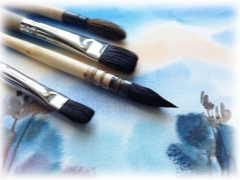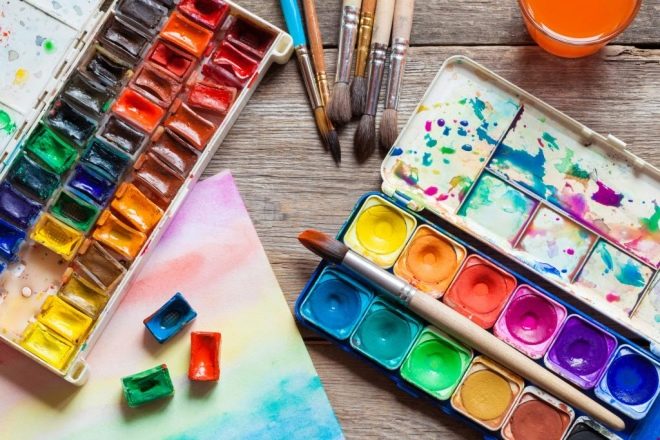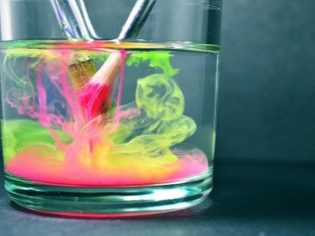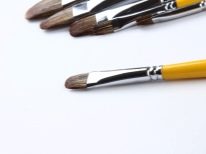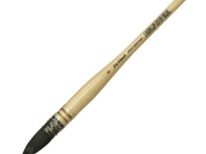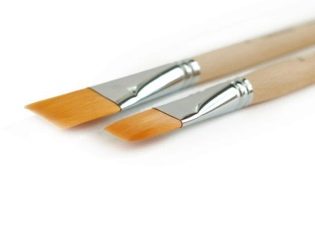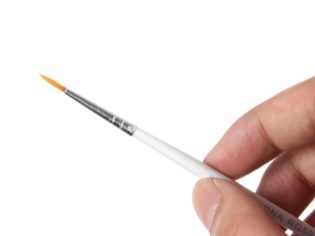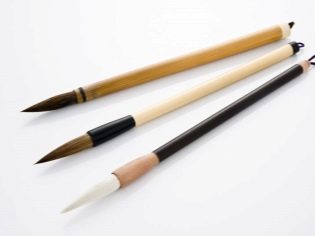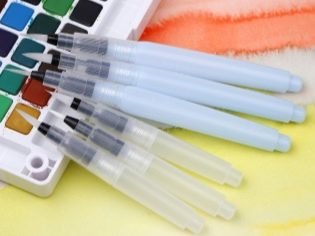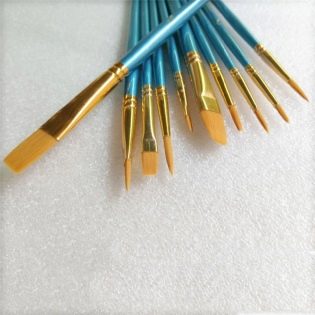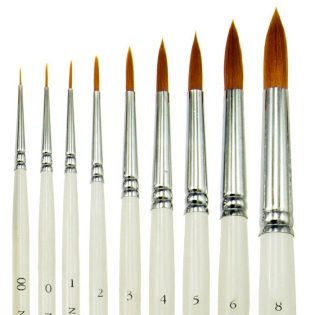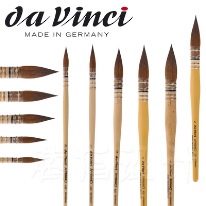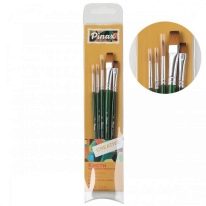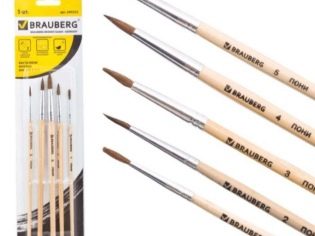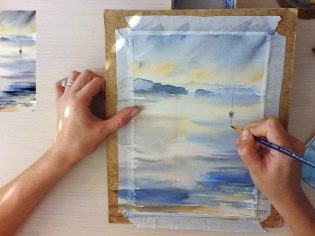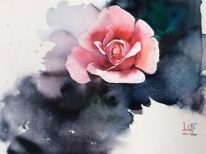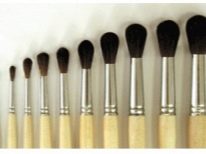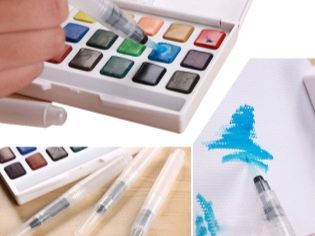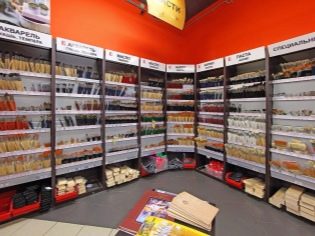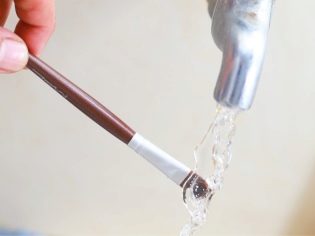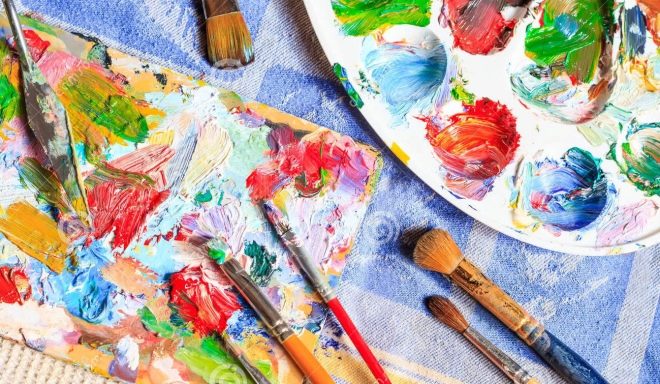Watercolor brushes: features of choice
To create a real masterpiece, the smallest details are of great importance, and the choice of a drawing tool plays a decisive role. Each type of paint puts forward its own requirements for brushes, and watercolor is no exception. Even a person with a remarkable talent will not be able to paint a watercolor painting if he chooses an inappropriate tool, so it’s impossible to ignore this moment.
Special features
Aquarelle is a non-aggressive dye, so there are no limitations on the pile material - both natural wool or bristle and synthetic materials can be used. Moreover, in the arsenal of a professional there should be a place for brushes of all types of rigidity, however, beginners should not acquire a whole set at once, because this will only confuse and complicate the choice.
It should be noted that watercolor suggests a huge (compared with other drawing techniques) amount of water, because the material chosen must retain moisture well.
The size of the pile, respectively, should also contribute to a large amount of captured water. This does not mean that absolutely all brushes must be very large, but at least one such tool must be.
Varieties
Watercolor brushes can look the same only to a 100% beginner, while professionals distinguish a number of varieties of such an artistic tool. Classification is carried out by a number of parameters, each of which has a value.
The first factor is the material. Ideal for the artist is considered to be a watercolor brush of sable hair, which is highly hygroscopic and durableHowever, such an acquisition will cost a lot. Among other materials of natural origin, brushes with a pile of goat, squirrel, camel or bull are distinguished, but they are no longer so high-quality.
Synthetics and professionals do seem to be a bad option, but these brushes are inexpensive, because ignorant people are in great demand. Beginners are often advised to take either inexpensive natural material, or a combination of synthetics with wool.
In addition, artistic tools are also classified according to the shape of the pile. In particular, wide brushes are well suited for painting large areas, thin ones for drawing small parts, and flat ones for soft glazing, that is, applying a transparent top layer over the lower one. There are also more unusual brushes: rigging or calligraphic. Each of them has a narrow purpose, which will be useful for a professional artist, but not for a beginner.
Recently, special hand-brushes have become very popular, which resemble an ordinary pen, but are painted with watercolor. The paint in them is usually quite dry, because you need to paint on a wet surface, but to moisten the canvas, a special water brush was also invented, also created on the basis of a pen.
Manufacturers
Real professionals with skill can tell about the advantages of certain brushes from different manufacturers, but this point is more related to personal preferences than to objective factors.
The most widespread in our country predictably received brushes of domestic production.As a rule, they are distinguished by an average quality, but at the same time a relatively low cost, which makes them an ideal choice for all who study or even simply try themselves in watercolor art.
If for children's creativity it is still permissible to buy goods from a little-known manufacturer, then for serious needs it is worth choosing something at the level of the “Neva Palette”.
Foreign brushes sold in our country are usually considered the property of professionals only, as they cost a lot, but they also provide excellent quality. Manufacturers of such brushes are American, European or Japanese companies that are well-known in narrow creative circles. Here the choice is extremely diverse, but you can highlight the products of the brands Da Vinci and Pinax.
A review of manufacturers will not be complete if Chinese brushes are ignored, but for serious needs it is better not to buy such products. It is impossible to say unequivocally that in the Celestial Empire they do not know how to make such a product at all, however, its acquisition involves a significant risk, because the product may not justify the investment in itself, even if they were small. Chinese instruments are still being bought precisely because of their cheapness, but with such an approach you cannot learn to draw well.
What to choose?
There is no definite advice on how to buy watercolor brushes - their different types are suitable for different techniques. You can give only a few general recommendations, which, perhaps, will narrow down a huge range of choices and will help you to choose something that is even relatively relative.
- A beginner should start with a small set of 3-5 brushes. Perhaps, it’s worthwhile to strive not for a variety of lint materials, but for a variety of sizes, since tools must be found in the arsenal for quickly painting the areas and for small parts. In the second place among the selection criteria for a set, there should be a noticeable difference in the shape of the pile, but one should not think that the difference in size and shape is interchangeable criteria.
- For those planning to paint in the technique of "alla prima" on wet paper, a large brush with which the paint will not be applied at all will become very useful: it is intended for wetting the substrate.
- For glazing, the essence of which consists in overlapping the lower bright layer with the upper air layer, a brush with a thin pile, capable of capturing a small amount of paint and feeling the difference in the degree of pressing, is more suitable.
- For those who want to create watercolor drawings, including painting landscapes from nature, but lazy to mess with real watercolor, special brushes with a water tank have been created. It is much easier to store and transport such an economy, and the result in capable hands turns out to be no worse.
You should not buy an artistic tool, focusing only on the reviews on the Internet. Creativity is a matter of taste, because it is better to buy brushes directly in the store, having the opportunity to hold the tool in your hands before buying.
Care and use tips
Watercolor is relatively careful with brushes, and yet they must be thoroughly washed after each drawing session. Fortunately, because of the water nature of such paints, washing the tools is not difficult - just put them under a stream of running water.
After the brushes are cleaned, they should be dried, if possible ensuring the correct position of the pile during the drying process. If we neglect this rule, the pile will quickly become tattered and lose its shape, and then there can be no talk about any productive use for its intended purpose.
It is the concern for the safety of the pile, including the maintenance of its correct form, is the main task of the artist. It is unacceptable to put the brush in a glass pile down, regardless of whether it happens in the process of drawing or after a session. Such an attitude to the pile will lead to the fact that it will bend and take a deformed shape, as a result of which it will be impossible to use it for further exercises.
Old brushes that still have become unusable should not be thrown away immediately - they can come up with a new use. For example, you can use them to mix colors on a palette or wet a canvas with water.
For information on which brushes to choose for avareli, see the next video.
